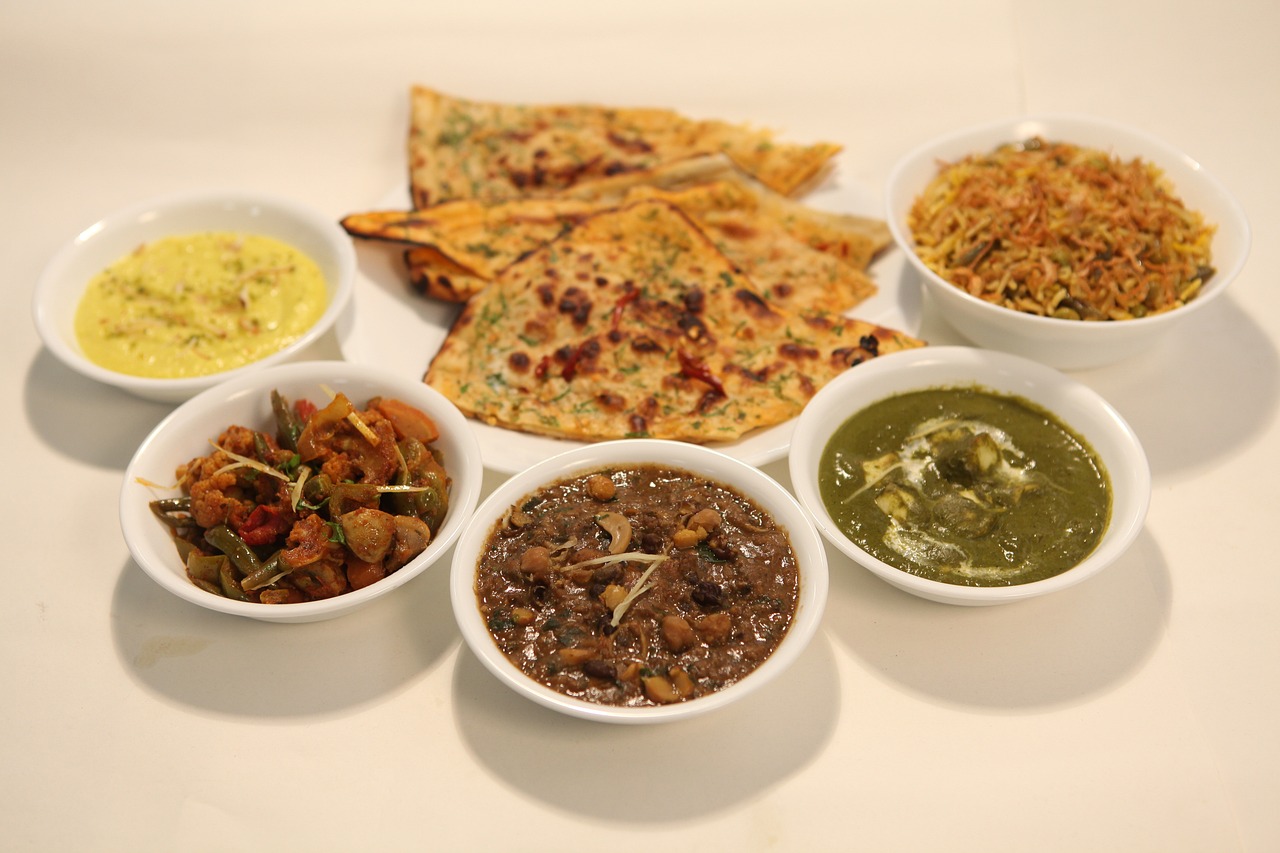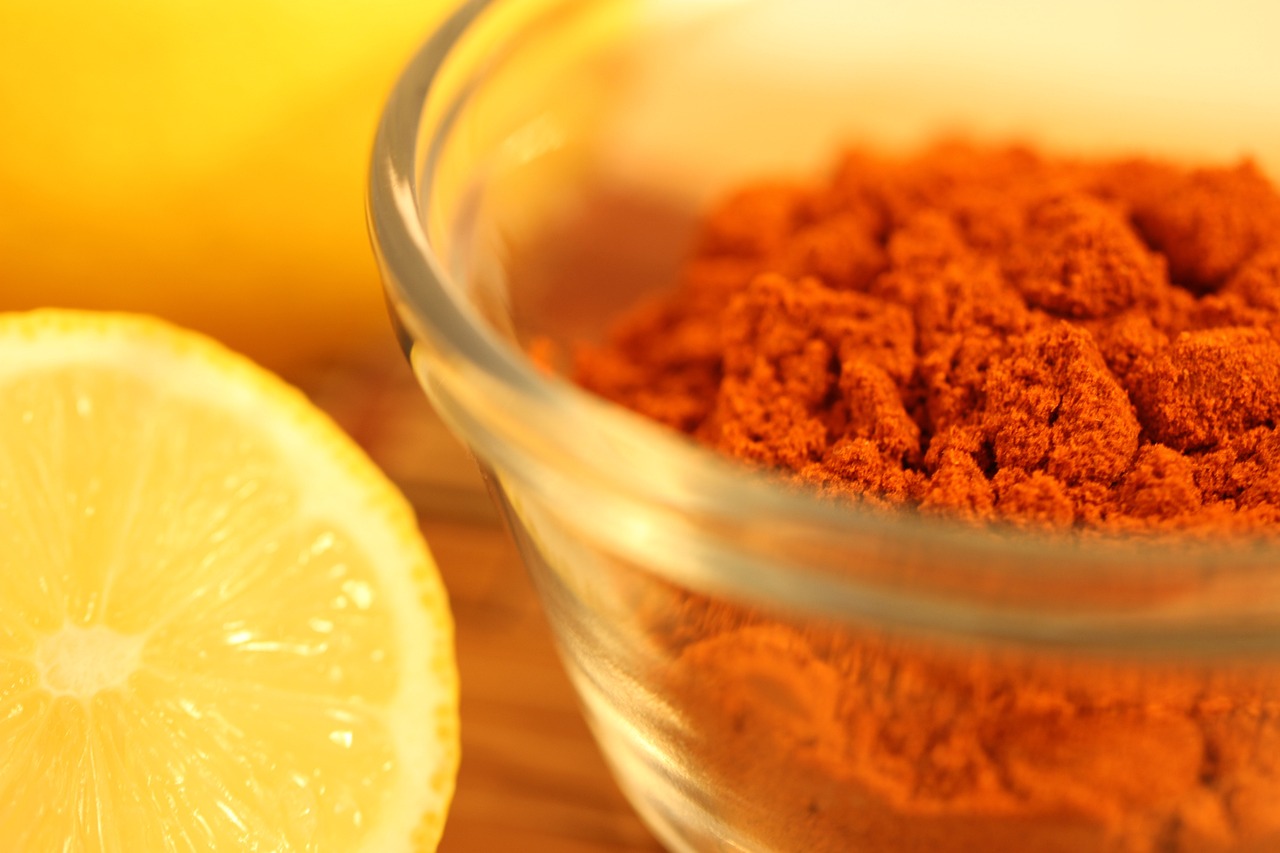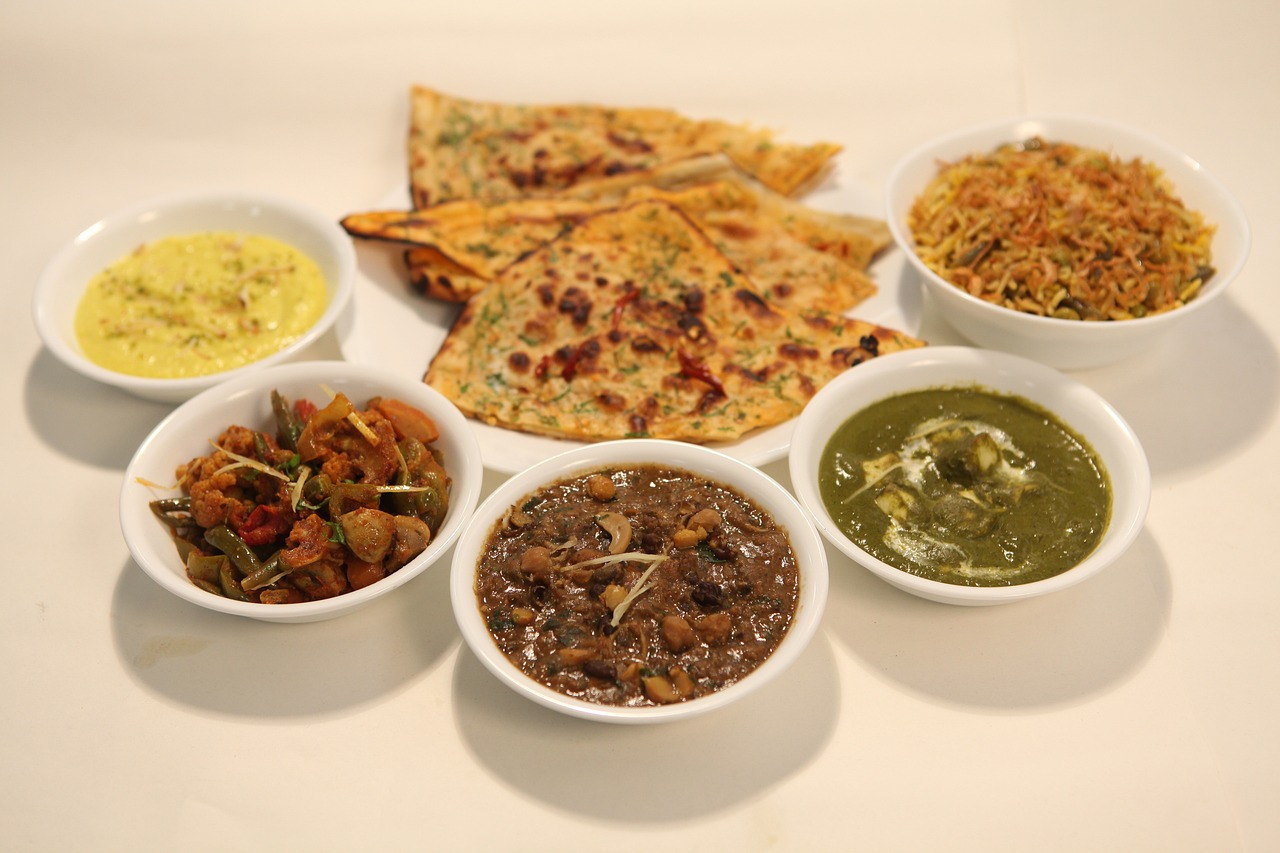Step into a world filled with rich flavors and aromatic spices as you explore the magic of Indian curry. On IndianCulture.com, you will discover a treasure trove of knowledge about India’s diverse cuisine. From mouthwatering regional specialties to the art of blending spices, this article will take you on a culinary journey through the heart of Indian culture. Get ready to tantalize your taste buds and unlock the secrets behind the varieties and techniques of Indian curry.

History of Indian Curry
Indian curry is a culinary treasure cherished around the world for its rich flavors and aromatic spices. With a history dating back thousands of years, curry has evolved and adapted to the diverse cultures and regions of India.
Origins of Indian Curry
The origins of Indian curry can be traced back to ancient civilization, where the use of spices was prevalent. The spice trade routes brought in various flavors and herbs from different parts of the world, contributing to the development of curry as we know it today. Influenced by Persian and Arab cuisines, Indian curry started to take shape through the blending of local ingredients and foreign spices.
Influence of Mughal Cuisine
During the Mughal era, which spanned from the 16th to the 19th century, Indian curry underwent a significant transformation. The Mughals introduced rich techniques and flavors to Indian cuisine, including the use of nuts, dried fruits, and aromatic spices. This royal influence can still be seen today in dishes like biryanis and kormas, which are known for their opulent ingredients and meticulous cooking methods.
Evolution of Curry
As the culinary landscape of India evolved, so did the curry. Each region started developing its own unique style of curry, showcasing the diverse ingredients available locally. The geographical and cultural differences in India gave birth to a variety of curry dishes, each with its own distinct taste and cooking techniques. From the creamy and mild curries of the North to the spicy and tangy curries of the South, the evolution of Indian curry is a testament to the country’s culinary diversity.
Basic Ingredients Used in Indian Curry
The vibrant flavors of Indian curry mainly come from a harmonious blend of spices and herbs, aromatic ingredients, and a variety of proteins and vegetables.
Spices and Herbs
Spices play a crucial role in Indian cuisine, and curry is no exception. The famous blend of spices known as “masala” is the key to a flavorful curry. Common spices include turmeric, chili powder, cumin, coriander, cardamom, cinnamon, and cloves. These spices not only add flavor but also have various health benefits.
Aromatics
Aromatics like onions, garlic, and ginger are often used as a base for curry. They provide depth and richness to the dish, enhancing the overall flavor profile. Along with these, curry leaves, mustard seeds, and fenugreek seeds are also commonly used for tempering and adding a distinctive aroma.
Proteins and Vegetables
Indian curry is versatile and can be made with a wide range of proteins, including chicken, lamb, fish, and vegetarian options like paneer (Indian cottage cheese) and lentils. Vegetables such as potatoes, okra, cauliflower, peas, and spinach are also frequently used. The use of proteins and vegetables adds texture and substance to the curry, making it a wholesome and satisfying meal.

Types of Indian Curry
With India’s vast culinary diversity, it’s no surprise that curry comes in various regional varieties. Each region brings its own distinct flavors and cooking techniques to the table.
North Indian Curry
North Indian curries are known for their rich, creamy gravies and aromatic spices. Popular dishes like butter chicken and paneer tikka masala are synonymous with this region. Cream and yogurt are often used to add a smooth and luscious texture to the curries.
South Indian Curry
South Indian curries are vibrant, spicy, and packed with flavors. They often incorporate ingredients like coconut, curry leaves, and tamarind for a tangy twist. Dishes like sambar and rasam are iconic examples of South Indian curry, with their unique blend of spices and lentils.
East Indian Curry
The cuisine of Eastern India is heavily influenced by Bengali flavors and techniques. Mustard oil, mustard seeds, and poppy seeds are commonly used, giving the curries a distinct taste. Fish curries, such as the famous Bengali fish curry, are a specialty of this region.
West Indian Curry
The western region of India is known for its spicy and aromatic curries. The state of Gujarat, in particular, is famous for its vegetarian curries made with lentils and a unique combination of spices. Undhiyu, a mixed vegetable curry, and Gujarati kadhi are popular dishes from this region.
Regional Varieties of Indian Curry
Indian curry further showcases its diversity through regional specialties, each with its own unique flavors and cooking techniques.
Punjabi Curry
Punjabi curry is known for its robust and hearty flavors. The use of dairy products like ghee (clarified butter), cream, and yogurt adds richness to the curries. Butter chicken and rajma masala are classic Punjabi curry dishes that perfectly represent the flavors of this region.
Rajasthani Curry
Rajasthani curry is famous for its spicy and vibrant flavors. The cuisine of Rajasthan makes good use of spices like red chili powder, turmeric, and coriander to create bold and flavorful curries. Dal Baati Churma, a traditional Rajasthani dish, is a combination of lentil curry, baked wheat dough balls, and a sweet crumbly dessert.
Bengali Curry
Bengali curry is characterized by its delicate balance of sweet and savory flavors. The use of mustard oil, fresh seafood, and a blend of spices like cumin, coriander, and fennel seeds gives Bengali curries their distinct taste. Famous Bengali curries include Shorshe Ilish (Hilsa fish cooked in mustard sauce) and Chingri Malai Curry (Prawn curry in coconut milk).
Goan Curry
Goan curry reflects the coastal flavors of the region, influenced by Portuguese and Konkani cuisines. The use of coconut, vinegar, and spicy red chilies gives Goan curries a unique tangy and fiery taste. Popular Goan curries include Chicken Xacuti, a fragrant curry with roasted spices, and Fish Curry Rice, a staple in Goan cuisine.

Common Techniques in Indian Curry
To create the perfect Indian curry, certain techniques are essential in bringing out the best flavors.
Tempering
Tempering, also known as tadka, is a popular technique used in Indian cooking to enhance the flavors of spices and aromatics. This involves heating oil or ghee and adding whole spices like cumin, mustard seeds, and curry leaves. The tempering is then added to the curry, providing a burst of flavor and aroma.
Grinding Spices
Grinding spices freshly at home is a common practice in Indian cooking. This ensures that the spices are at their freshest and unlock their full potential. Spice blends like garam masala, which are used in many curry recipes, are often freshly ground to infuse the dishes with their rich flavors.
Layering Flavors
Indian curry often involves layering flavors to create a complex and well-rounded taste. This is achieved by cooking the spices and aromatics until they release their oils, adding the proteins or vegetables, and then gradually adding other ingredients like tomatoes, yogurt, or coconut milk. This layering allows the curry to develop depth and complexity.
Slow Cooking
Slow cooking is another important technique used in Indian curry. Cooking the curry over low heat allows the flavors to meld together and intensify over time. This slow and patient process ensures tender proteins and perfectly cooked vegetables, resulting in a flavorful and satisfying final dish.
Traditional Indian Curry Recipes
Indian cuisine offers a plethora of traditional curry recipes, each with its own unique blend of flavors and spices. Here are a few classic recipes that showcase the essence of Indian curry.
Butter Chicken
Butter chicken, or murgh makhani, is a rich and creamy curry made with tender chicken pieces cooked in a tomato-based sauce. The chicken is marinated in yogurt and spices, giving it a tender and flavorful taste. Butter chicken is best enjoyed with naan or rice.
Chicken Tikka Masala
Chicken tikka masala is a popular Indian curry known for its smoky flavors. Marinated chicken pieces are grilled or roasted and then simmered in a creamy tomato-based sauce. The dish is rich, flavorful, and pairs well with naan or rice.
Chana Masala
Chana masala is a vegetarian curry made with chickpeas cooked in a flavorful blend of spices. It is a hearty and protein-rich dish that is typically served with rice or bread. The spices give chana masala its distinct flavor, making it a favorite among vegetarians and meat lovers alike.
Palak Paneer
Palak paneer is a classic Indian curry made with spinach and paneer (Indian cottage cheese). The spinach is cooked until it wilts, and then blended with spices to create a vibrant and nutritious curry. Paneer cubes are added to the curry, creating a delightful combination of textures. Palak paneer goes well with naan or rice.
Vegan and Vegetarian Indian Curries
Indian cuisine offers a wide range of vegan and vegetarian curry options that are both delicious and nutritious.
Aloo Gobi
Aloo gobi is a vegan curry made with potatoes (aloo) and cauliflower (gobi). The vegetables are cooked with a blend of spices, creating a flavorful and comforting dish. Aloo gobi is often served with roti or rice.
Baingan Bharta
Baingan bharta is a smoky and flavorful eggplant curry. The eggplant is roasted until it becomes tender and then mashed with spices, onions, and tomatoes. This vegan curry is best enjoyed with roti or rice.
Dal Makhani
Dal makhani is a creamy and indulgent lentil curry made with black lentils and kidney beans. The lentils are slow-cooked with a blend of spices, butter, and cream, resulting in a rich and flavorful dish. Dal makhani is typically served with naan or rice.
Malai Kofta
Malai kofta is a vegetarian curry made with deep-fried vegetable dumplings (koftas) in a creamy tomato-based sauce. The koftas are typically made with a mixture of potatoes, carrots, peas, and paneer. This curry is rich, flavorful, and best enjoyed with naan or rice.
Popular Accompaniments for Indian Curry
Indian curries are often enjoyed with a variety of accompaniments that complement the flavors and textures of the dishes.
Naan
Naan is a traditional Indian bread made with white flour and baked in a tandoor (clay oven). It is soft, pillowy, and perfect for mopping up curries. Garlic naan and butter naan are popular variations that add extra flavor to the meal.
Roti
Roti is a staple Indian bread made with whole wheat flour. It is thin, unleavened, and slightly chewy. Roti is a healthier alternative to naan and pairs well with both vegetarian and non-vegetarian curries.
Rice Varieties
Rice is a common accompaniment for Indian curry, and there are several varieties to choose from. Basmati rice, known for its fragrance and long grains, is a popular choice. Biryani, a rice-based dish cooked with layers of meat or vegetables, is also a beloved accompaniment to curry.
Raita
Raita is a refreshing yogurt-based side dish that helps balance the flavors of spicy curries. It can be made with various ingredients like cucumber, tomato, or onion, and is often flavored with mint or cumin. Raita adds a cool and creamy element to the meal.
Modern Fusion Curries
As Indian cuisine continues to evolve, modern fusion curries have become increasingly popular. These creative interpretations bring together Indian flavors with influences from other cuisines to create exciting new dishes.
Indo-Chinese Fusion
Indo-Chinese fusion curries combine Indian and Chinese flavors to create dishes like chili chicken, manchurian, and hakka noodles. These dishes are characterized by bold and spicy flavors and have gained immense popularity in India and beyond.
Curry Pizzas
Curry pizzas take the best of Italian and Indian cuisines, with a crispy pizza crust topped with fragrant Indian curries. The toppings can range from butter chicken to tikka masala, creating a fusion of flavors that caters to both pizza and curry lovers.
Curry Tacos
Curry tacos combine the flavors of Indian curry with the convenience of Mexican street food. Fillings like butter chicken or paneer tikka are wrapped in soft tortillas and topped with fresh salsa and cilantro for a unique and flavorful fusion experience.
Curry Pasta
Curry pasta is a fusion of Indian spices and Italian pasta. The pasta is cooked with a fragrant curry sauce and topped with ingredients like paneer, chicken, or vegetables. This fusion dish offers a delightful blend of flavors from both cuisines.
Health Benefits of Indian Curry
Aside from their delicious taste, Indian curries offer several health benefits due to the use of spices and wholesome ingredients.
Antioxidant-rich Spices
The spices used in Indian curry, such as turmeric, cinnamon, and cloves, are packed with antioxidants. These antioxidants help fight oxidative stress in the body and may have anti-aging properties.
Anti-inflammatory Properties
Many spices used in Indian curry, including turmeric, ginger, and garlic, have anti-inflammatory properties. These spices can help reduce inflammation in the body and may have potential benefits for conditions like arthritis and heart disease.
Digestive Aid
Indian curries often include spices like cumin, coriander, and fennel, which can aid digestion. These spices have been traditionally used in Indian cuisine to support healthy digestion and reduce bloating.
Immune Boosting
The spices and herbs used in Indian curry, such as turmeric, ginger, and garlic, are known for their immune-boosting properties. These ingredients can help strengthen the immune system and support overall health.
In conclusion, Indian curry is an incredible culinary tradition that has evolved over centuries, showcasing the rich flavors and diverse regional cuisines of India. From the origins of curry to the various types, regional varieties, and modern fusions, Indian curry is a testament to the country’s culinary diversity. Whether you savor the traditional recipes or explore the modern interpretations, Indian curry never fails to captivate the taste buds and bring people together in a celebration of flavors. So, immerse yourself in the magic of Indian curry and embark on a flavorful journey through the vibrant and diverse cuisine of India.
